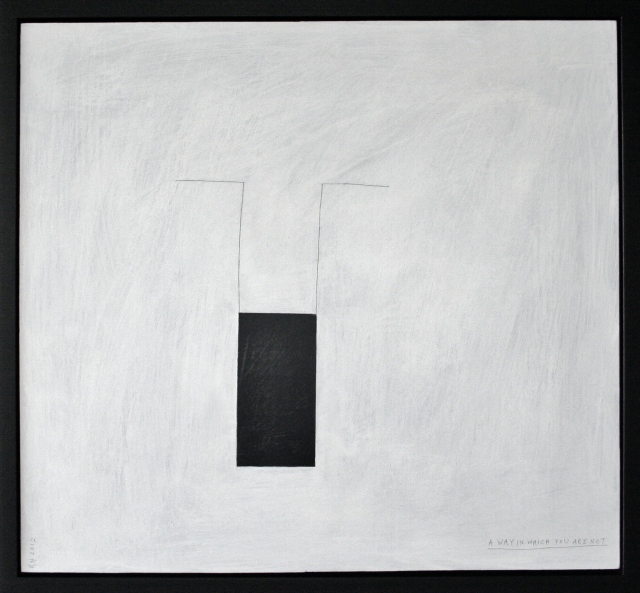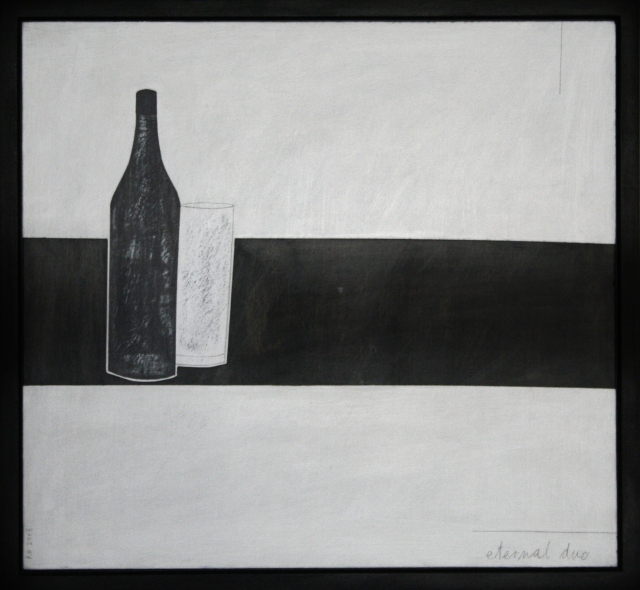ROGER HICKIN / Now We Enter Now We Leave

ROGER HICKIN / Now We Enter Now We Leave
10-28 July 2012
We enter life through one door, go out through another.
In the interim are many doors. Wherever you go you need a door.
The kind of art I sometimes … practice is based on an often faltering – perhaps deluded – belief in the capacity of the almost-nothing to embody the almost-everything. A makeshift approach to the metaphysical. An attempt to reach Eliot’s “condition of complete simplicity, costing not less than everything”.[i]
Sometimes we get there in spite of ourselves. As my friend David Howard points out: “there is more than surface to be worked”.
– Roger Hickin 2012
Artist Bio Sketch:
Roger Hickin’s artistic practice initially took the form of simple, powerful sculptures created from textured, earthy materials including wood, metal, graphite, sand, copper and quartz. Resonant with what Peter Simpson calls a “spiritual humanism”, Hickin’s works draw heavily on the symbolism of the Christian religious tradition; in particular, his sculptures are dominated by the form of the cross. However, rather than attempting abstraction or transcendence, they remain deeply rooted in the qualities of the materials themselves, evoking a kind of spirituality inherent in the irregular grain of wood or the oily sheen of minerals.
Drawing on the writings of the Spanish Catholic priest San Juan de la Cruz (St. John of the Cross), Hickin’s work shifted away from sculpture towards subtle, spare compositions in graphite on white acrylic-washed board. Motifs in the form of simple geometric shapes such as doorways, crosses, horizons and, more recently, vessels (specifically bottles and glasses – universal symbols open to interpretation) contribute to a sense of a spirituality pared back to a quietly stark, essential simplicity, reflecting Hickin’s belief in “the capacity of the almost-nothing to embody the almost-everything.” For David Howard, Hickin’s works “inhabit – and are inhabited by – silence.” [ii]
Hickin was born in Invercargill in 1951 and currently lives in Christchurch. He has been painting and exhibiting in galleries throughout New Zealand since 1986. His work is held in several major public collections, including the Christchurch Art Gallery, Te Puna o Waiwhetu, the Sarjeant Gallery in Wanganui, and the Bath House Museum in Rotorua.
[i] T. S. Eliot Little Gidding (1942); subsequently published collectively in Four Quartets (1943).
[ii] Text kindly supplied: www.orexgallery.co.nz/artist_pages/hickin_artist%20page.htm









